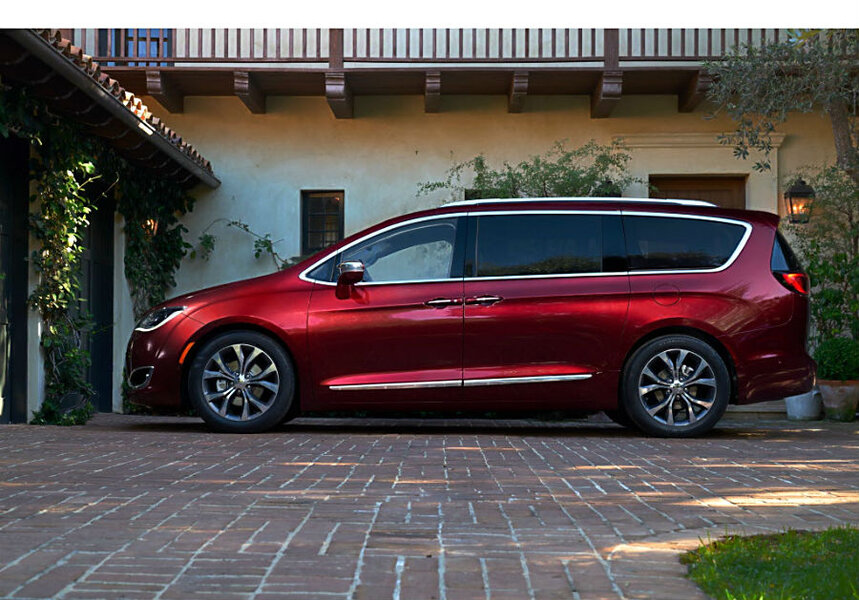Fiat Chrysler and Google team up to make self-driving minivan
Loading...
Google and Fiat Chrysler are teaming up to make a self-driving minivan, the companies announced Tuesday, partnering to adapt 100 Chrysler Pacifica hybrids that could one day be the tech giant's first autonomous family car.
But car enthusiasts – as well as drivers content to sit back and let the car take the wheel – will have to wait. The cars won't be available for sale any time soon. First comes testing on a private track, followed by trials on public roads.
Google designed its small two-seat self-driving prototype on its own. The Chrysler partnership will mark Google's first with a major automaker. John Elkann, chairman of Fiat Chrysler, said in April that his company should collaborate, rather than compete, with other businesses like Google or Apple. Google also has been in conversation with several automakers, as the agreement with Fiat Chrysler would not keep either party from entering into other partnerships.
The minivan model itself, a seven-seater much larger than Google's own two-person vehicle, is an interesting decision. The autonomous vehicle offers enough space for an entire family and is modeled on Chrysler's 2017 Pacifica.
The design of the 2017 Pacifica is meant to revive Chrysler's original old-time market for minivans, mommy-mobiles with rear sliding doors that were once the premier family vehicle. Minivan sales peaked in North America in 2000, and since then the archetypal family vehicle shifted to the SUV.
As part of the minivan makeover, the 2017 Pacifica includes touch-screen display, heated second-row seats, seatback touch screens, LED fog lights, and a key fob.
Associated with family and safety, the minivan model might offer a good start for the Google-Fiat Chrysler partnership. Research suggests that self-driving vehicles, which can take over many of drivers' manual functions, could lead to an 80 percent drop in car crashes over the next 20 years. Tesla's Autopilot, for example, allows the car to stay in one lane or to change lanes by itself when the driver flicks on the turn signal.
Yet, the autonomous functions might also lead drivers to engage in other distractions that wouldn't be as alluring otherwise. In a minivan, in particular, several children in the back seats could lead to distracted driving in and of itself. Drivers may think they can sit back and relax while the car takes over, but in fact there are certain functions for which the driver may be responsible for on a moment's notice.
In fact, despite self-driving cars having real potential to reduce accidents, many drivers are afraid to use them. 75 percent of drivers say they're scared to ride in an autonomous vehicle, according to a poll conducted by AAA.
"We believe that our country cannot go slow on safety," Chris Urmson, chief architect of Google's autonomous car program, told federal officials last month. "Despite the progress made, our roads are still unsafe for people. Ninety people die on U.S. streets every day due to motor vehicle accidents, and that number increased by about 8 percent in 2015 alone. The concern should not be that [autonomous car] technology comes too soon, but that it comes too late."





